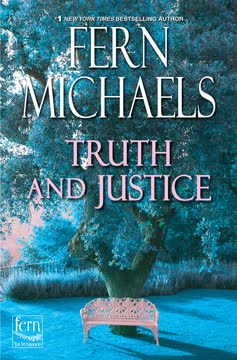Plot Summary
Autumn Longings and Losses
On a crisp autumn day, Myra Rutledge is haunted by the quiet of her country home and the ache of lost days spent righting wrongs with her Sisterhood. Her closest friend, Annie, returns unexpectedly, reeling from the departure of her partner Fergus, who has left to reunite with his estranged family after a windfall. Their reunion is interrupted by the arrival of Maggie Spitzer, who, shattered and guilt-ridden, reveals her husband Gus died in Afghanistan months ago. Maggie's confession of grief, anger, and the unraveling of her marriage brings the women together in shared vulnerability. Over lunch and laughter, they begin to rediscover the comfort of their old bonds, even as each woman faces the voids left by love, family, and purpose.
Maggie's Return, Secrets Unveiled
Ted Robinson, Maggie's steadfast friend and former colleague, is electrified by her return. He and Espinosa rush to her side, eager to support her and perhaps rekindle old hopes. The women, tipsy and nostalgic, are shepherded home by the men, who sense the depth of Maggie's wounds. As the group sobers, Maggie hints at a new story—one that could reignite the Sisterhood's sense of mission. The promise of a cause to fight for stirs excitement and anticipation, even as the shadows of the past linger. The bonds of friendship and loyalty are reaffirmed, and the first sparks of purpose begin to glow.
Sisterhood Reunited, New Mission
The call goes out to the Sisterhood: Nellie, Pearl, and Martine are summoned, each wrestling with their own aches of aging, loss, and longing for action. The news of Maggie's return and a possible mission brings them together at Myra's home, where the warmth of reunion is tinged with the urgency of unfinished business. Over Annie's "homemade" spaghetti, the women share laughter, memories, and the first details of a troubling case in Baywater, Maryland. The sense of being needed, of having a righteous cause, breathes new life into the group, even as they recognize the risks and the tolls of time.
Corruption in Baywater Exposed
Maggie reveals the heart of her story: twin judges in Baywater, the Ciprani sisters, are running a corrupt system, funneling children into boot camps for profit, echoing a notorious Pennsylvania scandal. The town is pristine on the surface but rotten underneath, with the twins' power unchecked and their wealth unexplained. The Sisterhood's outrage is immediate, and the mission takes shape: expose the corruption, free the children, and bring justice to those who have abused their power. The stakes are high, and the enemy formidable, but the Sisterhood's resolve is fierce.
Gathering the Vigilantes
Charles, Myra's husband and the group's strategist, dives into research, uncovering the twins' history, finances, and the web of fear that keeps Baywater silent. The Sisterhood debates tactics, legends, and the need for patience. Allies are called in: Abner Tookus, the hacker; Avery Snowden, the security expert; and Jack Sparrow, a wronged ex-FBI agent, to help Pearl shake her own pursuers. The group splits tasks—some to investigate, others to build cover stories and gather evidence. The sense of camaraderie and shared danger is invigorating, but the risks are real, and the enemy is watching.
The Ciprani Twins' Empire
Celeste and Eunice Ciprani, the twin judges, rule Baywater with vanity, paranoia, and cruelty. Their lives are a display of wealth and privilege, their courtrooms engines of profit. They are haunted by the memory of their brother Peter, whom they had declared dead to seize his inheritance. As rumors of investigation swirl and strangers appear in town, their anxiety grows. The sisters' relationship is fraught with rivalry and shared guilt, and their grip on power begins to slip as the Sisterhood's net tightens.
Investigations and Old Wounds
Maggie, Ted, Espinosa, and new recruit Dennis West—whose reporting first exposed the twins—fan out to interview families, gather affidavits, and document abuses. They discover a pattern of fear, intimidation, and ruined lives. The Sisterhood's research uncovers the twins' financial schemes, offshore accounts, and the complicity of local officials. Meanwhile, Pearl's own underground railroad for abused women is threatened by relentless surveillance, but Jack Sparrow's arrival promises relief. The group's sense of mission is sharpened by the suffering they witness and the courage of those who dare to speak.
The War Room Awakens
In Charles's War Room, the Sisterhood reviews evidence, crafts airtight legends, and debates the timing of their intervention. The scale of the twins' operation is staggering—millions siphoned from the state, hundreds of children imprisoned, and a town cowed into silence. The group's own vulnerabilities—age, surveillance, the risk of exposure—are acknowledged, but their determination is unwavering. The plan is set: infiltrate, expose, and dismantle the twins' empire, while protecting their own and ensuring justice is served.
Pearl's Pursuit and Peril
Pearl endures relentless surveillance by federal agents, her work rescuing women and children under threat. Jack Sparrow and his team orchestrate a counter-operation, baiting the agents and setting a trap to expose their illegal tactics. The tension is high as Pearl navigates coded meetings, car switches, and the ever-present risk of arrest. The Sisterhood rallies to her side, determined to free her from the government's grip and restore her freedom to continue her life's work.
The Reporter's Breakthrough
Dennis West, the young reporter, becomes the linchpin of the investigation. His meticulous files, interviews, and affidavits provide the hard evidence needed to expose the twins. Maggie, Ted, and Espinosa mentor him, recognizing his courage and integrity. The team's efforts coalesce into a damning case against the Ciprani sisters, and the story is poised to break wide open. The power of journalism, the importance of truth, and the legacy of mentorship are celebrated as the group prepares for the final push.
Allies, Legends, and Plans
The Sisterhood, their allies, and the reporters converge in Baywater, each playing their part in the unfolding drama. Legends are tested as they infiltrate the twins' world, gather final evidence, and prepare for the public confrontation. The twins, sensing the walls closing in, grow increasingly desperate, plotting escape even as they attempt to maintain their facade. The stage is set for a reckoning, with the fate of the children, the town, and the Sisterhood's own legacy hanging in the balance.
Baywater's Facade Cracks
A retirement party for a local judge becomes the backdrop for the Sisterhood's public unveiling of the twins' crimes. The town's facade of order and prosperity is shattered as the truth comes out—children freed, families reunited, and the twins' power broken. The twins' attempts to flee are thwarted by the Sisterhood's careful surveillance and the intervention of their allies. The sense of justice, relief, and vindication is palpable, even as the cost of the battle is acknowledged.
The Judges' Desperation
Celeste and Eunice, stripped of their wealth and influence, make a last, desperate bid for freedom. Their paranoia and mutual recriminations reach a fever pitch as they attempt to flee with stolen funds, only to be intercepted by the Sisterhood and their allies. The confrontation is both farcical and tragic, as the twins' vanity and greed are laid bare. The Sisterhood's brand of justice is swift and creative, ensuring the twins will never again harm another child.
The Party and the Past
With the twins defeated, the Sisterhood and their allies gather to celebrate their victory and honor the courage of those who spoke out. Old wounds are acknowledged and, where possible, healed. Martine Connor, the former president, finds unexpected love with Peter Ciprani, whose return from the dead brings closure and hope. The bonds of friendship, love, and shared purpose are reaffirmed, and the group looks to the future with renewed faith in their mission.
The Trap is Sprung
Jack Sparrow's operation against the federal agents comes to fruition, exposing their illegal surveillance and clearing Pearl's name. The agents are neutralized, and the threat to Pearl's underground railroad is removed. The power of solidarity, resourcefulness, and righteous anger is celebrated as the Sisterhood ensures that justice is not only done but seen to be done. The victory is bittersweet, marked by the recognition of the risks and sacrifices required.
The Fall of the Twins
The Sisterhood enacts their unique brand of justice on the Ciprani twins, ensuring they are stripped of their ill-gotten gains and left with a legacy of humiliation. The stolen funds are recovered and distributed to the victims, and the twins are left powerless and disgraced. The sense of closure is profound, as the group reflects on the meaning of justice, the importance of compassion, and the enduring power of friendship.
Justice, Reunion, and Release
As the dust settles, the Sisterhood gathers at Pinewood to celebrate, reflect, and look ahead. Martine and Peter's budding romance offers hope for new beginnings, while the rest of the group contemplates their next adventure. The mission has tested their courage, resilience, and faith in one another, but it has also reaffirmed the values that brought them together. The story ends with laughter, plans for the future, and the promise that, when justice calls, the Sisterhood will answer.
Characters
Myra Rutledge
Myra is the heart of the Sisterhood, a woman of grace, intelligence, and deep sorrow. The loss of her daughter and the fading of her old life have left her yearning for purpose. She is fiercely loyal, nurturing, and wise, but also vulnerable to loneliness and regret. Myra's relationship with Annie is central—together, they embody the enduring power of female friendship. Throughout the story, Myra's leadership, empathy, and quiet strength guide the group, even as she wrestles with her own longing for meaning and connection.
Annie de Silva
Annie is Myra's closest friend and the Sisterhood's spark plug—irreverent, impulsive, and unafraid to challenge authority. Her recent heartbreak over Fergus's departure exposes her vulnerability, but she masks pain with humor and bravado. Annie's resourcefulness, quick wit, and willingness to bend the rules make her indispensable in the group's schemes. She is fiercely protective of her friends and unafraid to take risks, but beneath her bravado lies a deep need for belonging and affirmation.
Maggie Spitzer
Maggie's return is the story's inciting event. Grieving her husband's death and the collapse of her marriage, she is raw, honest, and searching for redemption. Her investigative instincts and moral outrage drive the mission against the Ciprani twins. Maggie's journey is one of healing—through action, friendship, and the rediscovery of her own strength. Her relationships with Ted and the Sisterhood are marked by loyalty, mutual respect, and the shared pursuit of justice.
Ted Robinson
Ted is Maggie's steadfast ally, a journalist of integrity and heart. His unspoken love for Maggie adds emotional depth, but his primary role is as a partner in the investigation. Ted's sense of duty, courage, and humility make him a stabilizing force. He mentors Dennis West, recognizing the importance of nurturing the next generation. Ted's journey is one of acceptance—of his feelings, his limitations, and the importance of doing what is right, even when it hurts.
Pearl Barnes
Pearl is a retired Supreme Court justice who has dedicated her life to rescuing abused women and children. Her work has made her a target, and she endures relentless surveillance and danger. Pearl is tough, principled, and unyielding, but also deeply compassionate. Her relationship with the Sisterhood is one of mutual respect and shared purpose. Pearl's arc is one of liberation—reclaiming her freedom and her right to fight for others.
Nellie Easter
Nellie, a retired federal judge, brings wisdom, pragmatism, and a dry wit to the group. She is physically frail but mentally sharp, often serving as the group's conscience and reality check. Nellie's partnership with Pearl is marked by shared history and mutual support. She is unafraid to challenge her friends, but always with love and a sense of perspective. Nellie's journey is one of continued relevance—proving that age does not diminish one's capacity for justice.
Martine Connor
Martine, the former president, is both a symbol and a participant—her presence brings legitimacy and resources to the mission. She is weary of public life, longing for freedom and genuine connection. Her unexpected romance with Peter Ciprani offers hope for renewal. Martine's arc is one of transformation—from figurehead to woman, from leader to lover, from public servant to private citizen.
Charles Martin
Charles, Myra's husband, is the group's behind-the-scenes mastermind. His War Room is the nerve center of the operation, and his research, planning, and technical skills are vital. Charles is methodical, patient, and deeply devoted to Myra, but he struggles with feelings of obsolescence and exclusion. His journey is one of adaptation—finding new ways to contribute and remain connected to those he loves.
Celeste and Eunice Ciprani
The Ciprani twins are the story's villains—vain, manipulative, and ruthless. Their shared history is marked by trauma, rivalry, and the betrayal of their brother Peter. They are driven by greed, fear, and a desperate need for control. As their empire unravels, their relationship fractures, revealing the emptiness at the heart of their lives. Their downfall is both a reckoning and a tragedy—a warning about the corrosive effects of unchecked power.
Dennis West
Dennis is the story's youthful conscience—a dogged, honest, and slightly awkward reporter whose work exposes the twins' crimes. He is mentored by Ted and Maggie, and his courage inspires the group. Dennis's journey is one of initiation—learning the costs and rewards of speaking truth to power, and finding his place in the fight for justice.
Plot Devices
Sisterhood as Vigilante Justice
The central device is the Sisterhood itself—a group of women who operate outside the law to right wrongs the system ignores. Their methods blend investigation, infiltration, and creative punishment, blurring the line between justice and revenge. The narrative structure alternates between the Sisterhood's planning and the unfolding consequences, building suspense and emotional investment. Legends and cover stories are used to protect identities and enable action. The story employs foreshadowing through the characters' personal losses and the recurring theme of unfinished business. The use of multiple points of view—Myra, Annie, Maggie, the twins, the reporters—creates a tapestry of perspectives, deepening the psychological complexity and moral stakes.
Corruption and Small-Town Facade
Baywater's pristine appearance masks a system of exploitation and fear. The twins' control of the courts, the complicity of local officials, and the silence of the townspeople create a sense of claustrophobia and menace. The boot camps serve as both literal and symbolic prisons, representing the consequences of unchecked authority. The gradual uncovering of evidence, the gathering of affidavits, and the public exposure of the twins' crimes drive the plot forward, culminating in a dramatic confrontation.
Redemption and Healing
The story is as much about the characters' internal journeys as the external mission. Maggie's grief, Annie's heartbreak, Pearl's persecution, and Martine's longing for love are all healed, in part, through action and solidarity. The return of Peter Ciprani and his reconciliation with Martine offer hope for renewal. The theme of mentorship—Ted and Dennis, the older women and the younger—underscores the importance of legacy and the transmission of values.
Creative Justice and Restitution
The Sisterhood's brand of justice is both symbolic and practical—humiliating the twins, recovering stolen funds, and ensuring restitution for the victims. The use of disguises, legends, and psychological tactics adds a layer of theatricality and satisfaction. The story ends not with vengeance, but with restoration—families reunited, wrongs righted, and the promise of future missions.
Analysis
Fern Michaels' Blindsided is a celebration of female friendship, resilience, and the pursuit of justice in a world where the system often fails the vulnerable. Through the Sisterhood, Michaels explores the power of solidarity, the necessity of creative action, and the moral complexities of vigilante justice. The novel critiques the corruption and complacency that allow abuse to flourish, while also acknowledging the personal costs of fighting back—loss, aging, and the risk of becoming what one opposes. The story's emotional arc is one of loss, healing, and renewal, as each character confronts her own wounds and finds strength in community. The use of humor, warmth, and inventive retribution tempers the darkness of the subject matter, making the narrative both engaging and cathartic. Ultimately, Blindsided is a testament to the enduring power of friendship, the importance of standing up for what is right, and the belief that, together, ordinary people can achieve extraordinary justice.
Last updated:
Review Summary
Blindsided received mixed reviews, with an overall rating of 4.29 out of 5. Many fans of the Sisterhood series enjoyed the book, praising the characters and justice-driven plot. Some readers found it engaging and entertaining, while others felt it lacked the excitement of previous installments. Critics noted slow pacing, confusing character introductions, and a desire for more involvement from younger characters. Despite these criticisms, loyal readers appreciated the continuation of the series and looked forward to future books.
Sisterhood Series
























Download PDF
Download EPUB
.epub digital book format is ideal for reading ebooks on phones, tablets, and e-readers.




